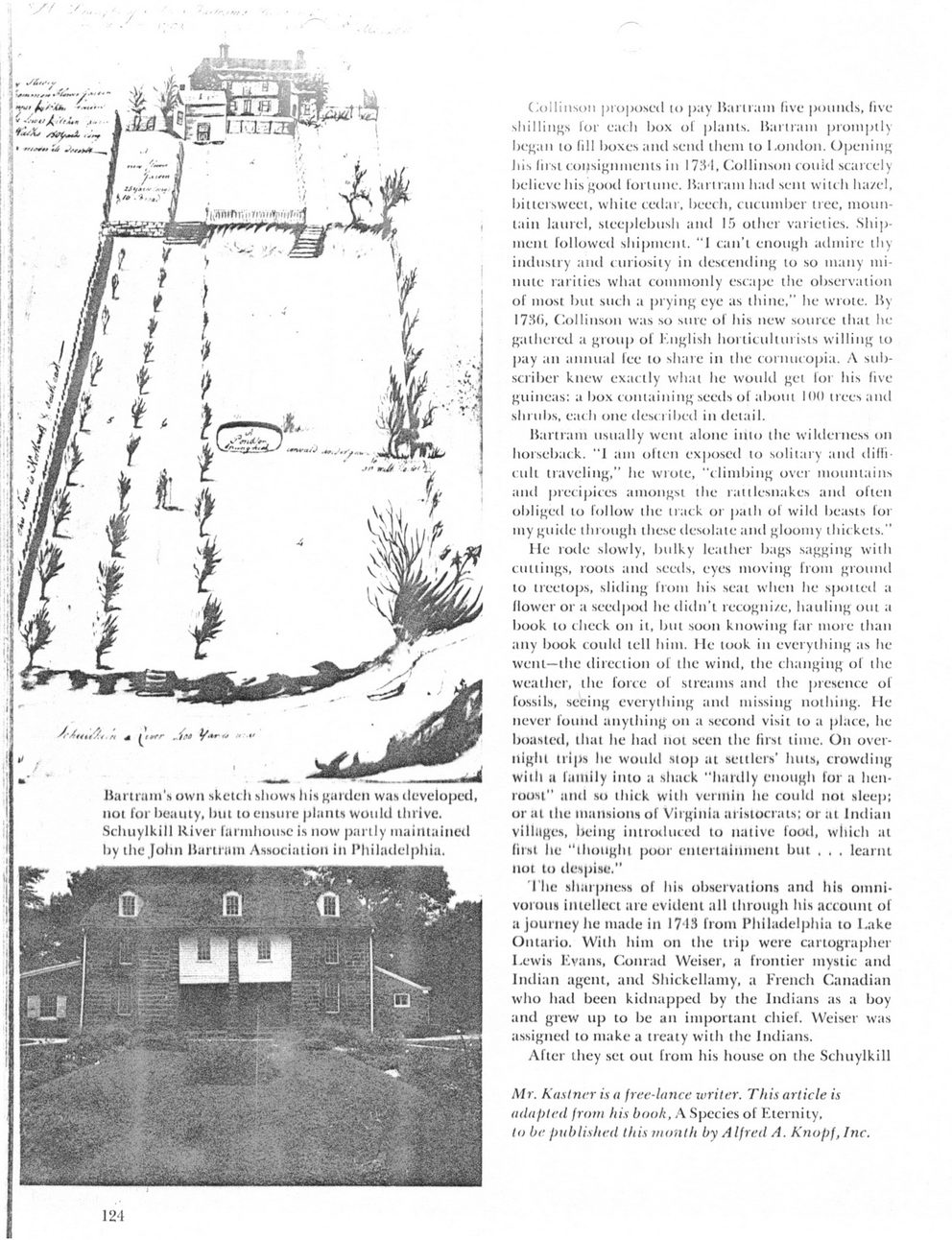This text was obtained via automated optical character recognition.
It has not been edited and may therefore contain several errors.
?.// V,... \ || W .'. Mrtt/i t'ftAtn .1- \ ,j fusX* ,. ? ft 4 ^t*rr ? liartram's own sketch shows It in garden was developed, not lor beauty, hut to ensure plants would thrive. Schuylkill River farmhouse is now partly maintained by the John Bartriun Association in Philadelphia. Collinson proposed to pay llartram live pounds, live shillings for each box of plants, ltartram promptly began to (ill boxes and send them to l .ondon. Opening his liist consignments in 17?M, Collinson couid scarcely believe his good fortune. Hat tram had sent witch ha/el, bittersweet, white cedar, beech, cucumber tree, mountain laurel, stceplebush and 15 other varieties. Shipment followed shipment. ?I can?t enough admire thy industry and curiosity in descending to so many minute rarities what commonly escape the observation of most but such a prying eye as thine,? he wrote. Hy I73(i, Collinson was so sure of his new source that he gathered a group of English horticulturists willing to pay an annual fee to share in the cornucopia. A subscriber knew exactly what lie would get lor his live guineas: a box containing seeds of about 100 trees and shrubs, cat h one desci ibed in detail. Bartram usually went alone into the wilderness on horseback. ?I am often exposed to solitary and difficult traveling,? he wrote, "climbing over mountains and precipices amongst the rattlesnakes anil often obliged to follow the track or path of wiki beasts for my guide through these desolate and gloomy thickets.? He rode slowly, bulky leather bags sagging with cuttings, roots and seeds, eyes moving from ground to trectops, sliding from his seal when he spotted a (lower or a seed pod he didn't rccogni/c, hauling out a book to (heck on it, but soon knowing far more than any book could tell him. He took in everything as he went?the direction of the wind, the changing of the weather, the force of streams and the presence of fossils, seeing everything and missing nothing. He never found anything oil a second visit to a place, he boasted, that he had not seen the first time. On overnight trips he would slop at settlers' huts, crowding with a family into a shack "hardly enough for a henroost" and so thick with vermin lie could not sleep; or at the mansions of Virginia aristocrats; or at Indian villages, being introduced to native food, which at first he ??thought poor entertainment but . . . learnt not to despise.? The sharpness of his observations and his omnivorous intellect arc evident all through his account of a journey he made in 1713 from Philadelphia to I.ake Ontario. With him on the trip were cartographer I.ewis Evans, Conrad VVeiser, a frontier mystic and Indian agent, and Shickellamy, a French Canadian who had been kidnapped by the Indians as a boy and grew up to be an important chief. Weiser was assigned to make a treaty with the Indians. After they set out from his house on the Schuylkill Mr. Kaslner is a free-lance writer. This article is adapted from his book, A Species of Eternity, to be published this month by A Ifred A. Knopf, Inc. 124

Bartram Smithsonian-article-re-John-Bartram-1977-p.4